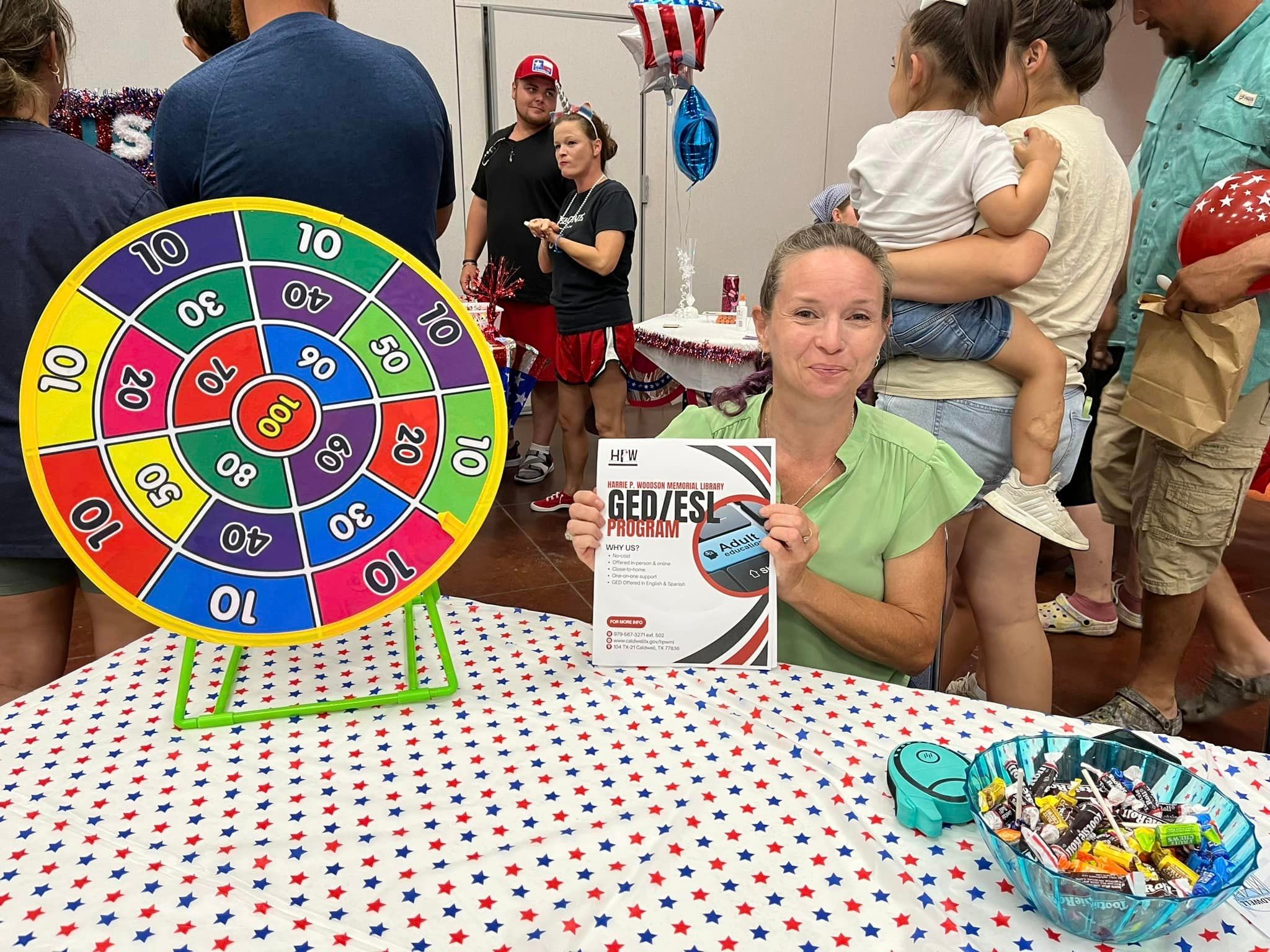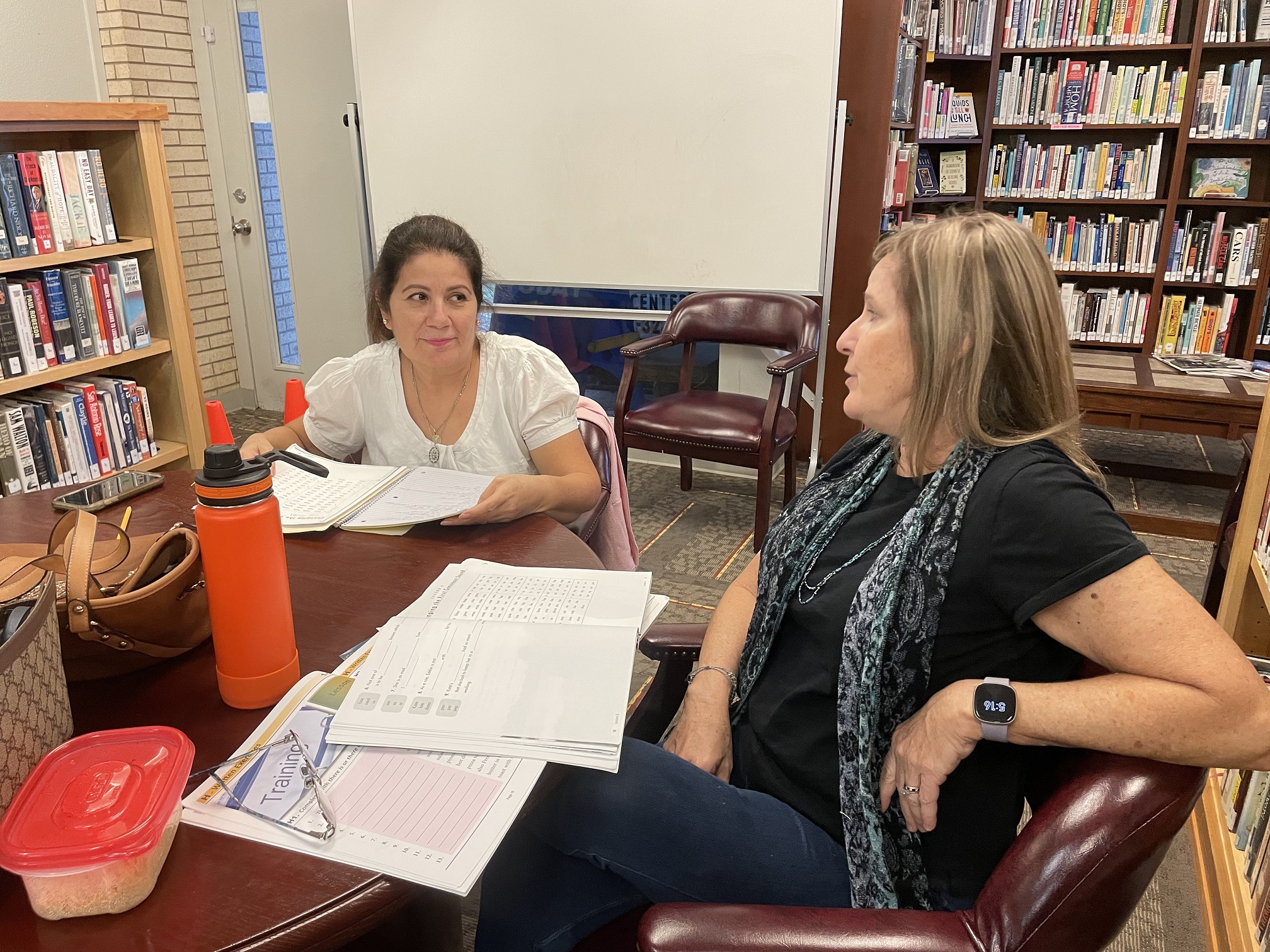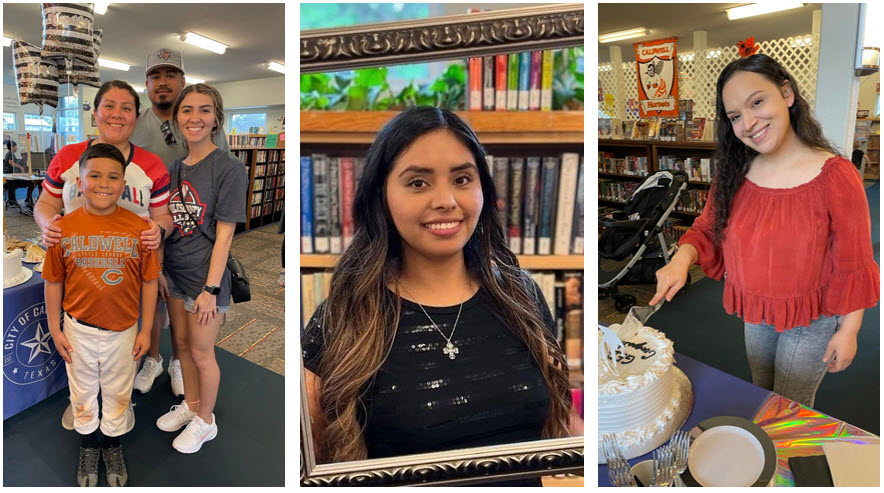Transforming Lives with Adult Literacy Programs
Rural Libraries at the Heart of Thriving Communities: An in-depth series on rural libraries doing notable work in education, arts and technology, economic development, community wellness, and human services
When people think about how libraries support literacy, the first thing that comes to mind is often a children’s storytime or a bustling summer reading program. At Harrie P. Woodson Memorial Library in Caldwell, Texas, you’ll certainly find these programs. But for this rural community library, literacy programming is for everyone, not just for kids.
Caldwell is a rural community of approximately 4,000 people, located about 30 miles west of College Station. And because Woodson is the only library in the county, people come from across the surrounding areas. We spoke with Library and Community Services Manager Heidi Frazier to learn more about Woodson’s General Educational Development (GED) and English as a Second Language (ESL) programs and their impact on the community.
Kickstarting new literacy programs
When Heidi began her role in 2019, she saw a community need for adult literacy programs. Many people lack internet access, and when the COVID-19 pandemic shut down most in-person services, the need to accomplish online tasks only grew. For example, navigating the process of searching for and making vaccine appointments was time-consuming and complicated, and many people relied on library staff and volunteers to navigate this process.
Heidi began organizing a community coalition to help generate resources, funding, and volunteers to support the programming. Heidi and her team knew they also wanted to offer GED and ESL classes, but they chose to kick off their adult literacy initiative with digital literacy classes to meet the more immediate needs. But the need for English language classes quickly became evident. Just a few weeks after starting the classes, a man came into the library with his wife and asked if someone could teach her to read and speak English.
“I said, absolutely,” Heidi said. “I’ll teach her myself because we had nobody else. So she was our first student.”
Fortunately, once Heidi started looking for ESL and GED resources, it didn’t take long to find them. The pandemic had halted what little programming existed in the area, and she found an opportunity to partner with Brazos Valley Council of Governments (BVCOG), a Texas Workforce Development Board. The program was seeking space to offer their classes, as well as help with facilitation.
Building a new partnership

Previous BVCOG partners, like schools or community centers, offered their space to the Texas Workforce team but didn’t participate in teaching, testing, or other aspects of the programming. Heidi offered much more to the BVCOG program, including recruiting mentors who could meet with students at least one hour a week. And the program is a success. The one-on-one support has not only helped participants achieve success in their studies, but also cultivates meaningful connections between students and mentors.
Breaking down barriers
One obstacle Heidi’s team noticed was that sometimes students would leave before class was over. When she asked why, several of the students told her that they had worked all day and hadn’t had a chance to eat. The programs are growing to the point where they have moved larger classes to the Caldwell Civic and Visitors Center, which hosts meetings, weddings, and other events. Heidi arranged for leftover food from these events to be donated to the students. An added benefit is that taking time to eat together has helped build community among the students.
Coffee con Amigos is another offering based on the same idea. Because the GED and ESL classes are offered at the same time, students from both classes are invited to show up an hour early to share refreshments and conversation. This offers ESL students a chance to practice conversational English with each other and with the GED students.
Volunteers strengthen the program

The volunteers who give their time as mentors are key to the program’s success. Because the classes are small, the skill levels are varied. But when students work with their mentor one-on-one, the mentors are able to meet them exactly where they are. This is critical for success as students come to the program with a variety of goals, like improving English skills to apply for jobs, studying for the citizenship exam, or passing the GED test.
The literacy program currently has between eight to ten active volunteer mentors who commit to meeting with students every week, with some volunteers taking on multiple students. “None of our programs would work without volunteers,” Heidi said.
“We call them mentors because the truth is, once these students and volunteers connect, they truly are mentors. They're helping them with very real situations. Two of our students are from Afghanistan and when the exiting of Afghanistan happened, they had family stuck there and they were reaching out for help.”
Reaching out and looking ahead
Heidi uses social media to promote these programs, but instead of relying just on the library’s Facebook page, she joined local Facebook groups to expand the reach of the posts. Word of mouth is another important way to network, especially when connecting with schools and youth who might have adult family members at home who could benefit from the literacy programs.
Part of this work includes getting people of all ages in the door who might not be familiar with what the library has to offer. For example, this year’s summer reading program was centered around helping kids learn about how the city serves them and how they can serve the city. The library hosted a volunteer and job fair for children ages five through 18. Younger kids were able to learn about volunteer opportunities with local groups and nonprofits and older teenagers could connect with businesses hiring young people.
“As we are getting these kids—and I'm really thinking about the older kids—into the library through this program, it's kind of watering the soil, if you will, and to then feed them into, ‘Hey, we have computer classes. Hey, you didn't earn your high school diploma? We can help you get your GED.’ It's strengthening our community, offering more resources to more people.”
While Heidi emphasizes it’s important to ensure current programming is stable and well-supported, she’s always looking for opportunities to grow the programs. She’d love to see an after-school program that could run concurrently with the adult programming, so that more adults can participate without worrying about childcare and kids have an opportunity to benefit from programming at the same time.
Advice for other libraries
Throughout the conversation, the words partnership and collaboration came up again and again. This rings true when it comes to sharing advice with other libraries hoping to do similar work. “I really think the key is if you have no money, do not think you have to do it on your own,” Heidi said.
She recommends approaching local groups, especially civic-minded organizations, to ask how they might be able to help. This could include asking for financial funding, books, volunteers, food, space, or programming. The library advisory board is another good place to network, since members often have additional community connections.
“I always start with, ‘Feel free to say no, but would you donate this?’ And nine out of 10 times we will get what we want. We try to reach out to people that have different anchors in the community, and it’s incredible. Mostly people want to give.”

Motivation and congratulations
One story that illustrates the importance and impact of literacy programs comes from Elbert Oberts, a 90-year-old Woodson man who signed up for the GED program. His story was picked up by the local media, and once the news spread, younger people in the community started signing up for classes.
Celebrating students’ achievements is an important (and fun!) part of all of the programs. The library recognizes students who earn their GED or obtain US citizenship through its programs by engraving their names on a plaque that’s displayed in the library and holding a reception for the students and their friends and families. It’s a meaningful milestone, especially for students who haven’t had the chance to experience a traditional graduation ceremony.
Much of the support and congratulations come from the other students and people in the community, especially through social media. “One young man got his GED. I think there were 7,000 hits on that post from people in the community who've never met him. ‘Congratulations! Way to go! Good job!’ People that don't even know each other pull together and support.”
Literacy program photos provided courtesy of Harrie P. Woodson Memorial Library.
Tocker infographic used with express, written permission of the Tocker Foundation. For more information see Infographic Request.
Learn more
For more information about Harrie P. Woodson Memorial Library, visit their website, programs page, or Facebook page.
This article is part of a series created in collaboration with the Tocker Foundation, a family foundation uniquely focused on supporting rural, public libraries all across Texas.
